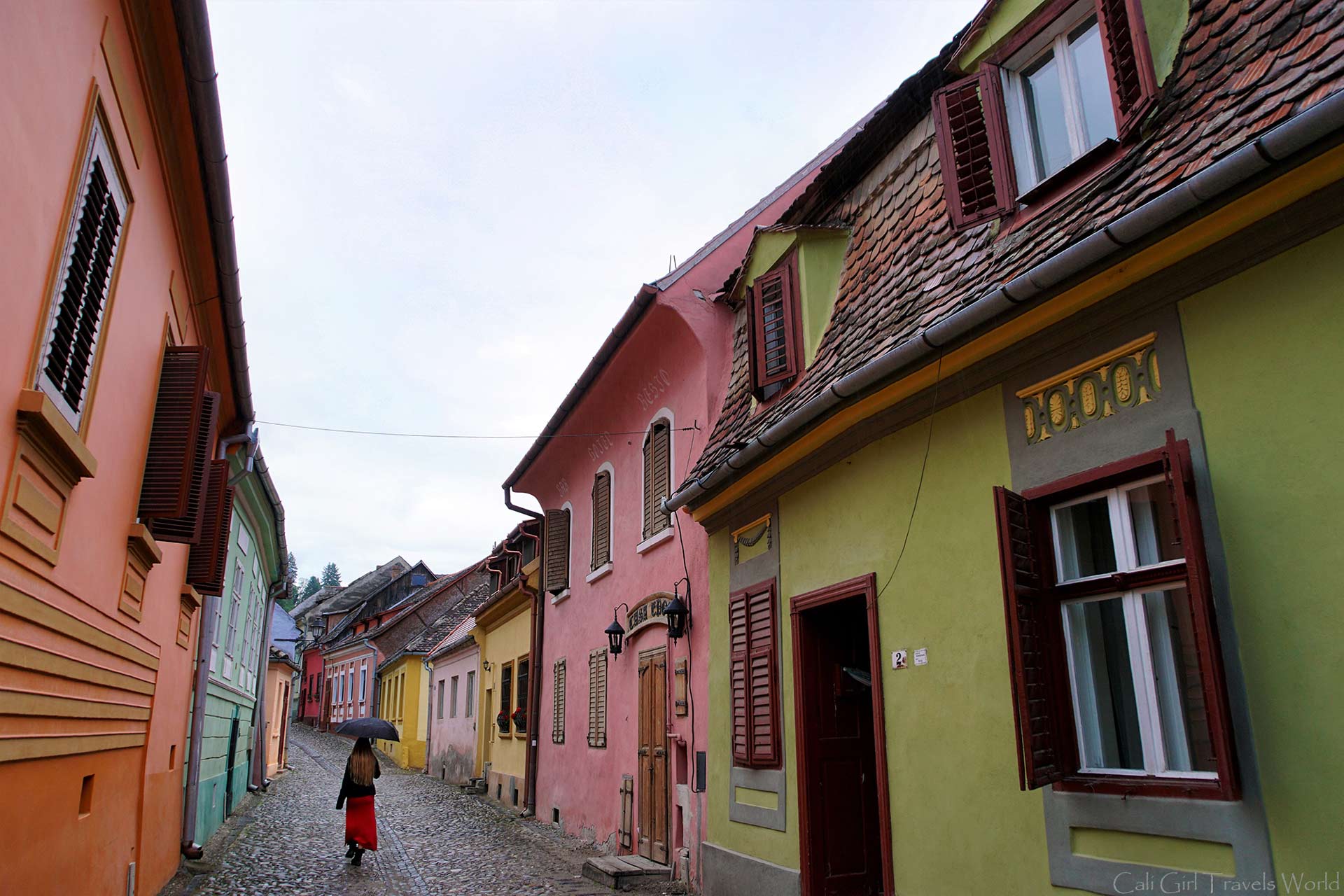
Sighisoara, Romania: 20+ Photos That Tell Its Story
The quaint, colorful and charming town of Sighisoara sits atop a hill behind solid walls and towers still standing watch all these centuries later.
Sighisoara today is an almost perfectly intact relic of the 1500’s. Nine of the original defense towers still stand, named after the craftsmen’s guilds that defended them.
This citadel is one of the most well-preserved medieval cities in Europe which is why it’s now a UNESCO world heritage site.
The beautiful cobbled streets are lined with brightly painted houses, art galleries, restaurants, and churches. You may be able to see every street and historical site you’re interested in within 3 hours, but we spent a full day exploring to soak in the charm of these antique streets.
This picturesque little town was the birthplace of the most famous Romanian of all time, Vlad Dracula, the inspiration for the myth of the famous vampire. He was the prince of Wallachia, and known for brutally killing his enemies slowly on a long spike. There are estimates that he impaled over 20,000 people on a single day and over 100,000 people total. The prince was known as Vlad the Impaler and was despised as a blood thirsty mass murderer.
There are many buildings in town designated for vampire-enthusiasts, with Dracula-themed restaurants, souvenir shops and little hotels.
During the peak
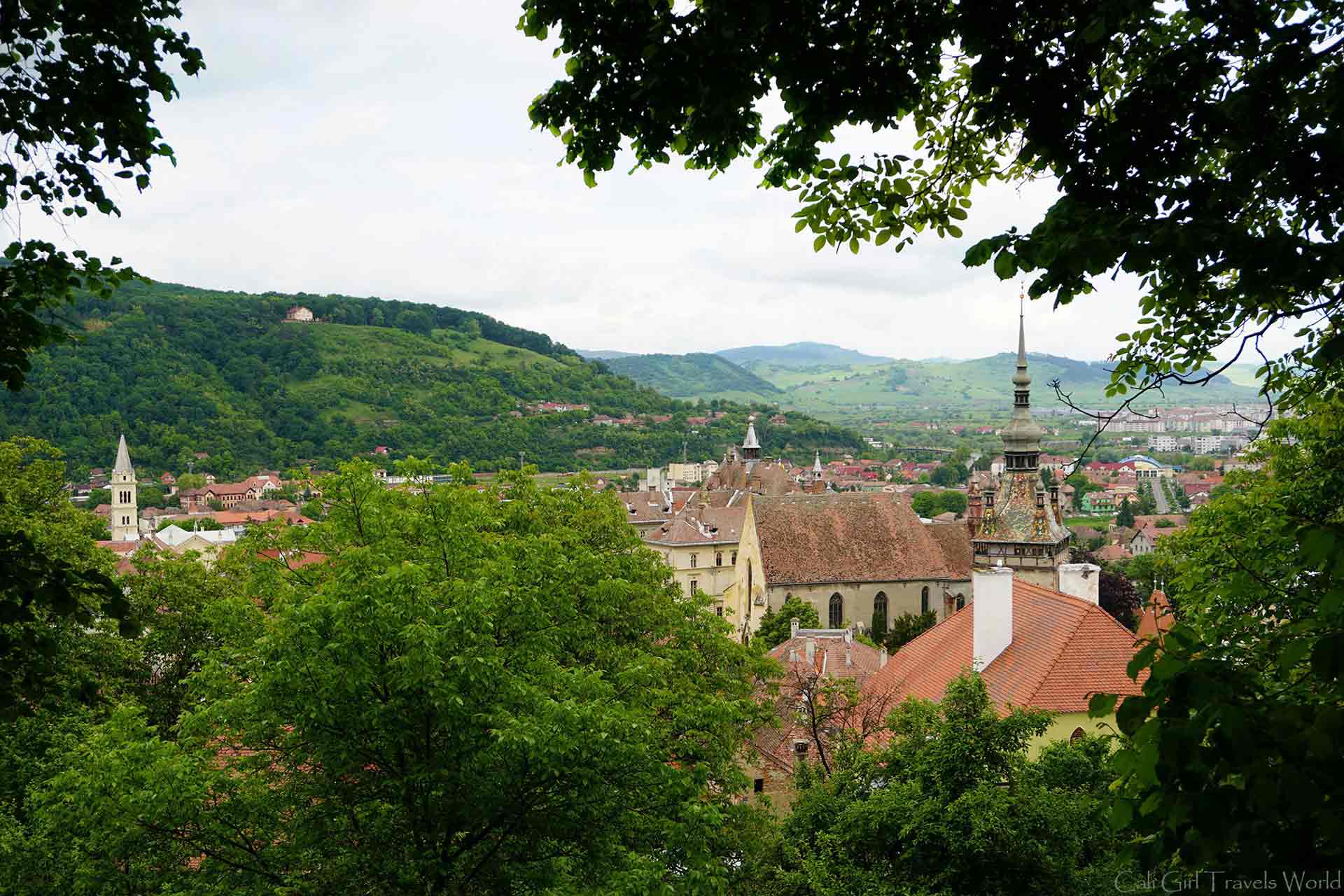

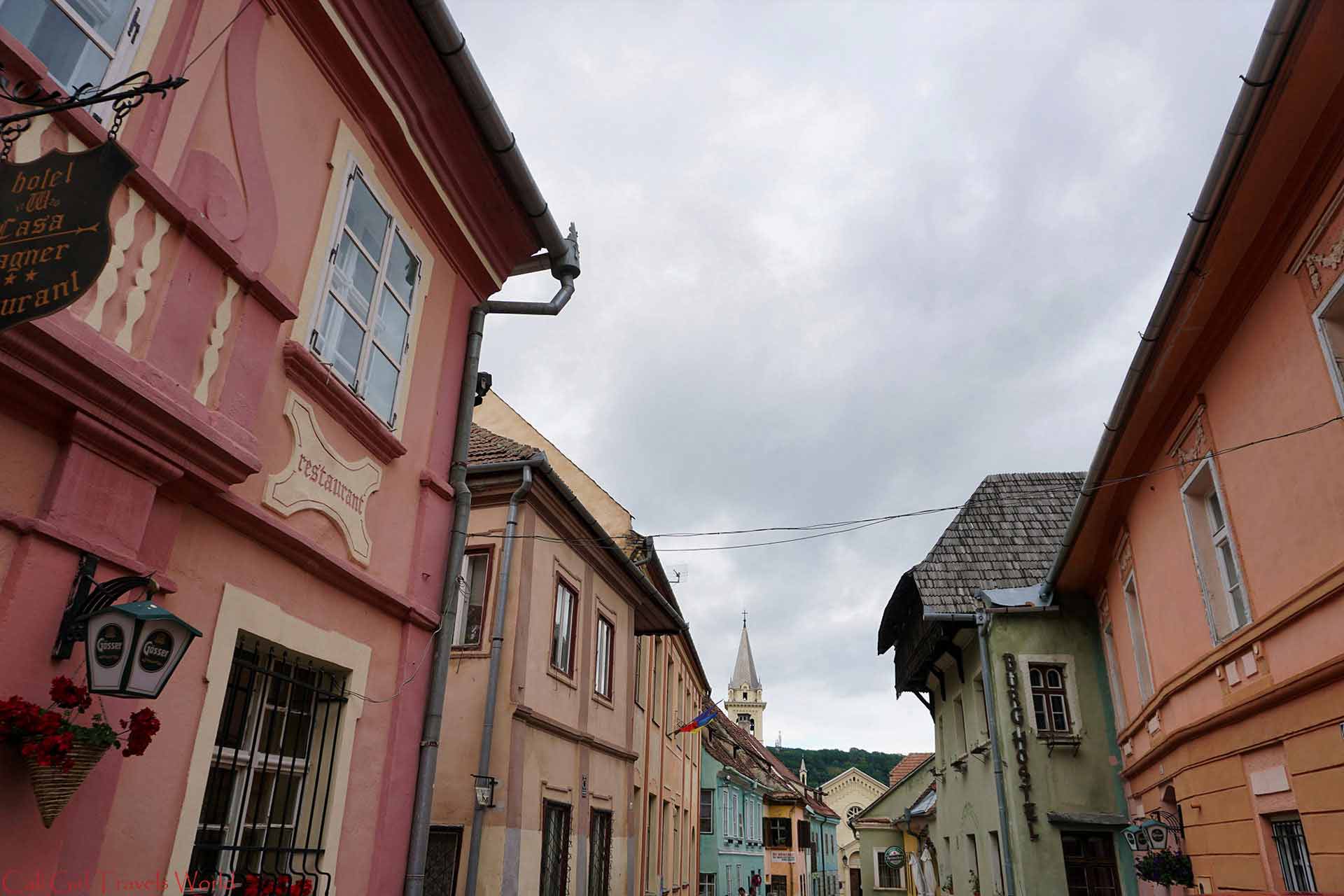
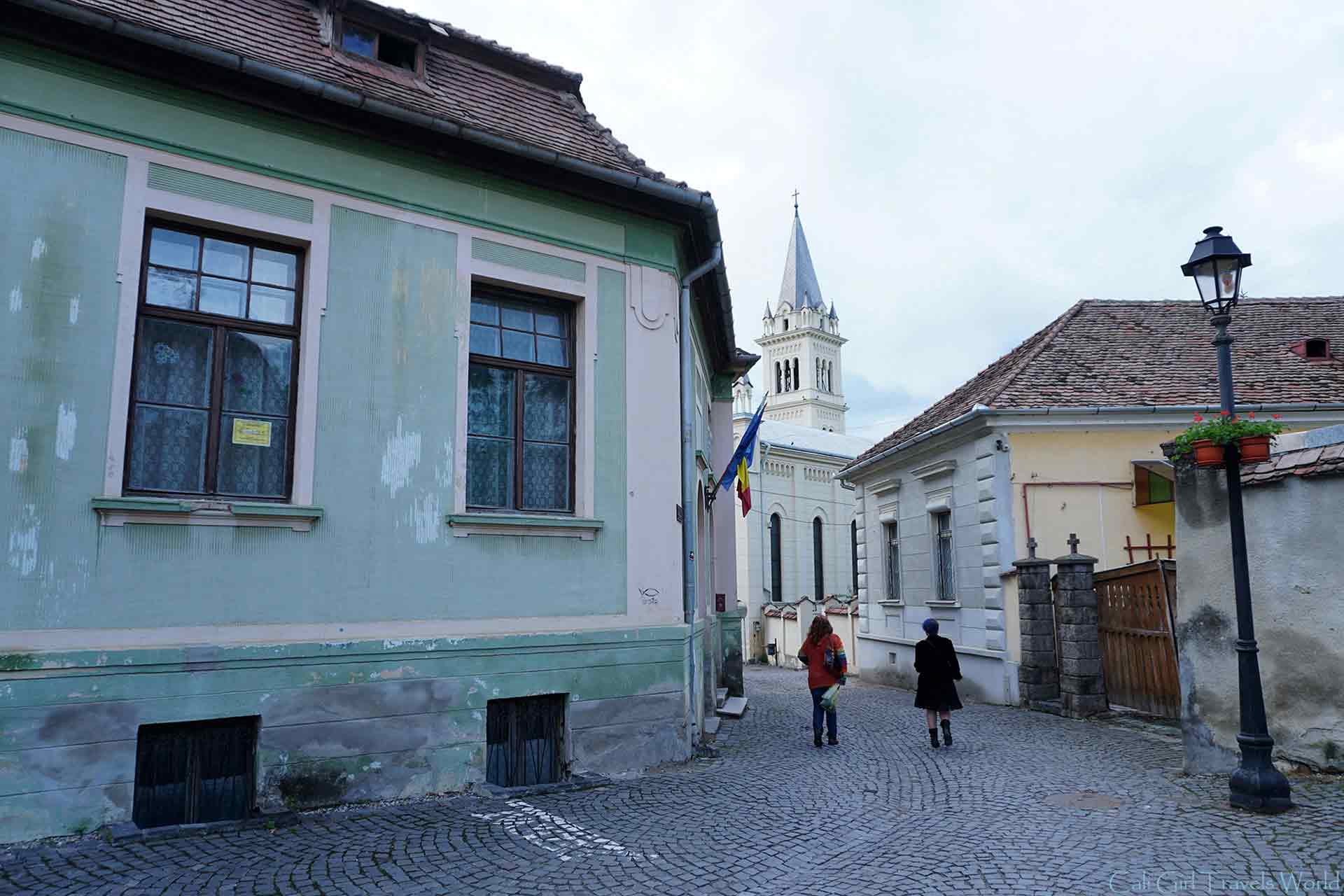
In the 1200’s, German immigrants began building the fortress of Sighisoara. Every defense tower was constructed and defended by one of Sighisoara’s 20 craftsmen’s guilds.
Back in those days, these German craftsmen dominated the Transylvanian economy and society. Only the Germans and other wealthy families lived within the walled city, while Romanian and Hungarian peasants lived in the unprotected Lower Town by the river.
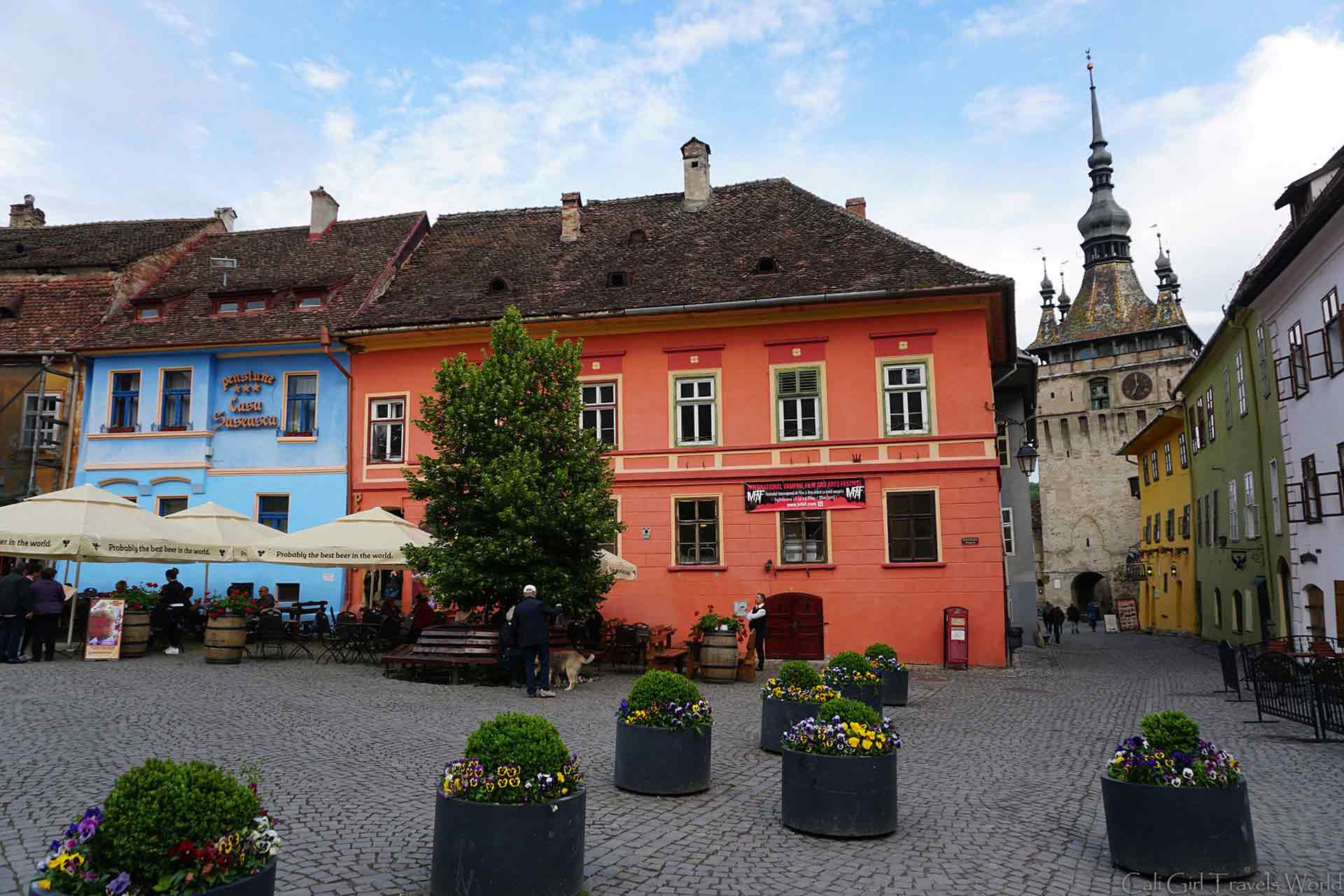
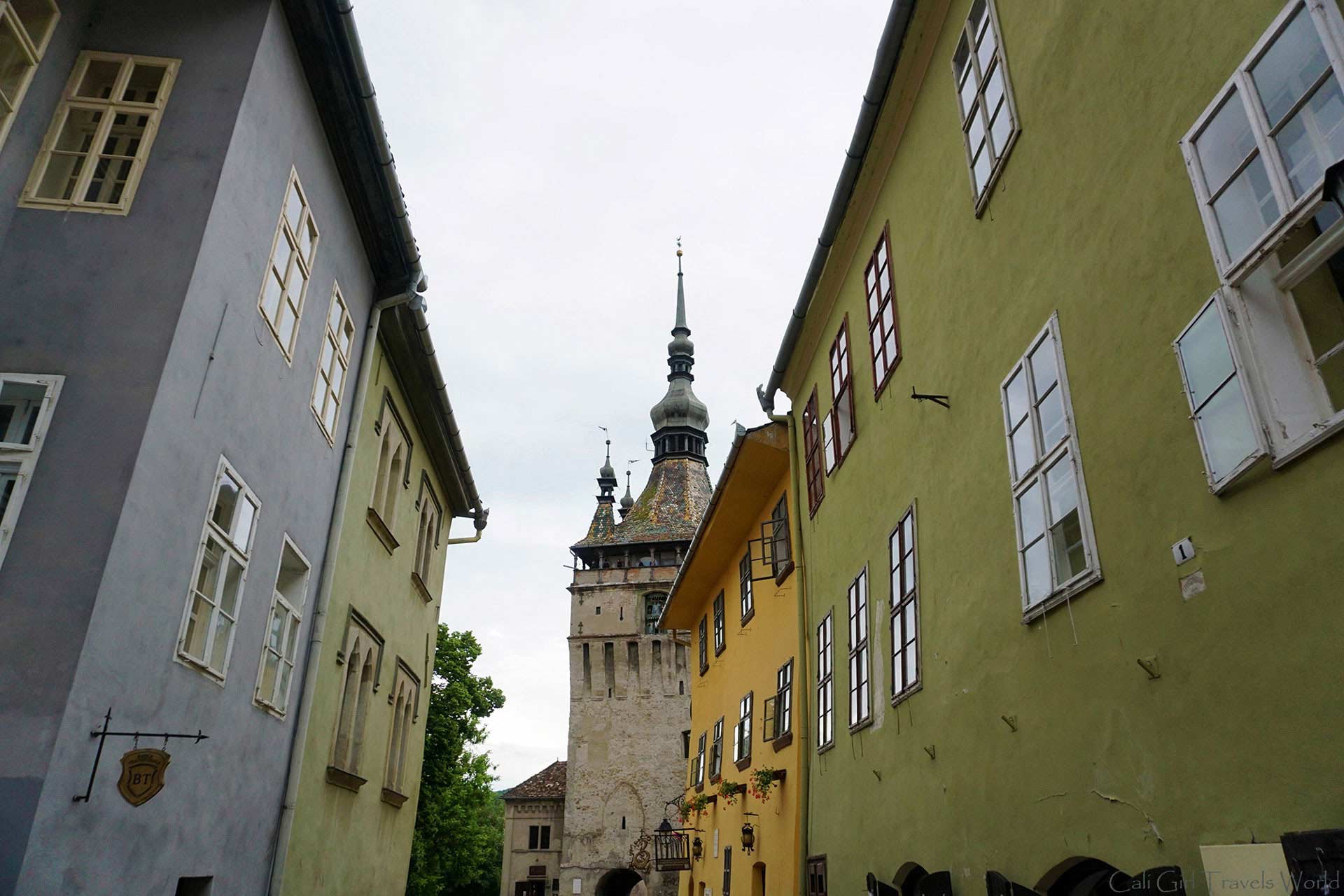
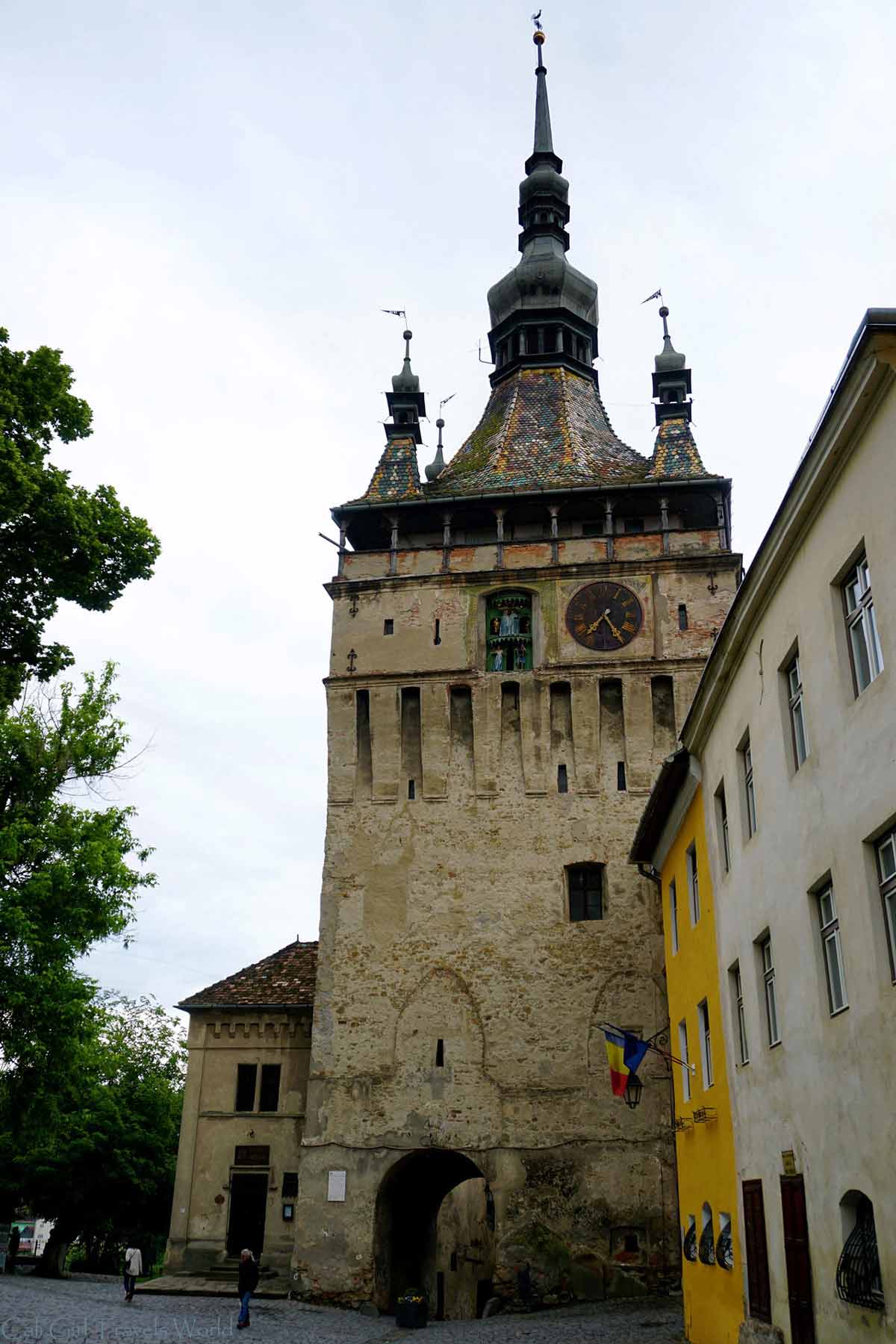
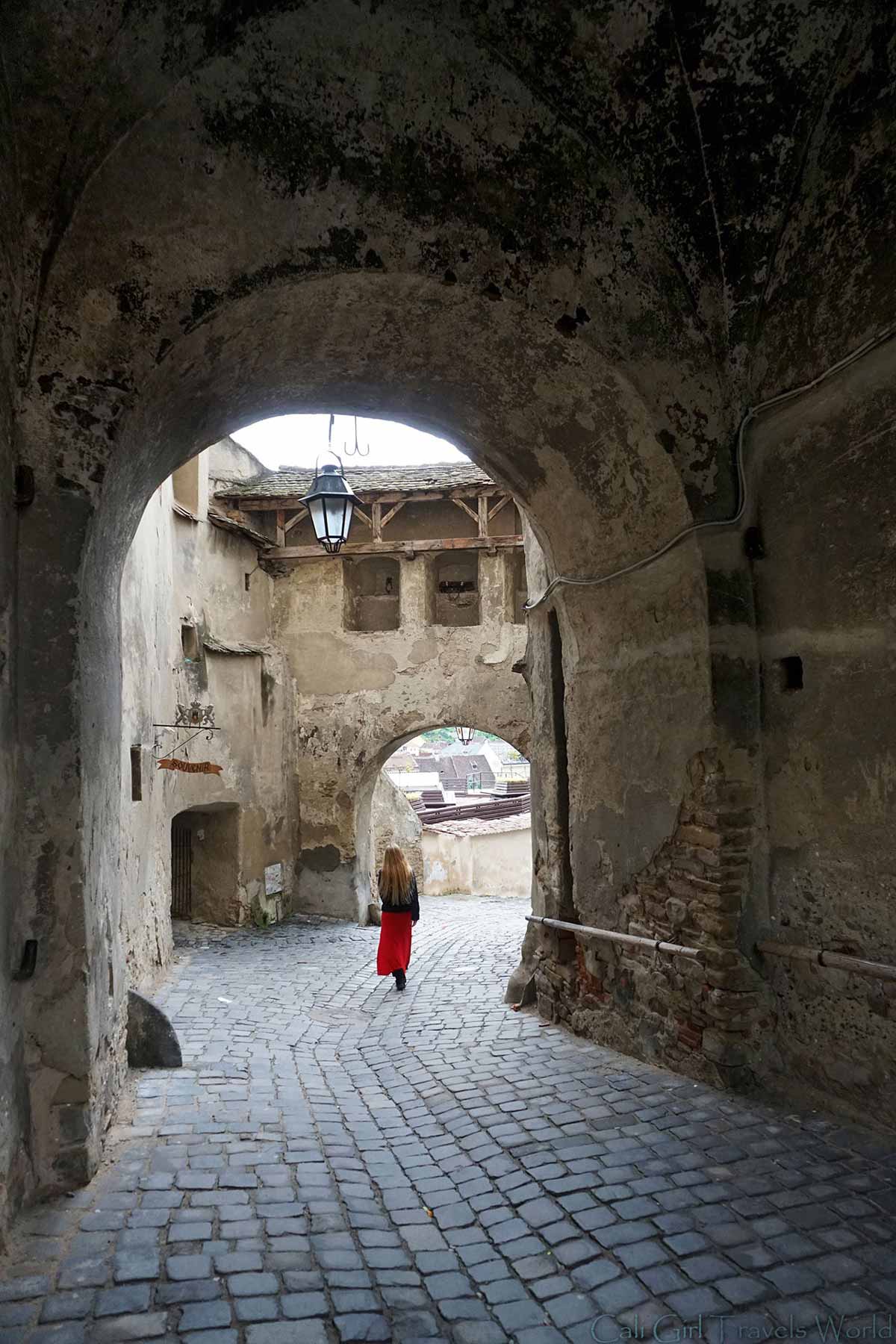
Sighisoara’s signature landmark, the Council Tower, defended the city’s main gate. It also held the town’s treasures and today it serves as the city’s museum. You can climb up the steep stairs, past relics and artifacts, to the top for a breathtaking view over the ancient fortifications.
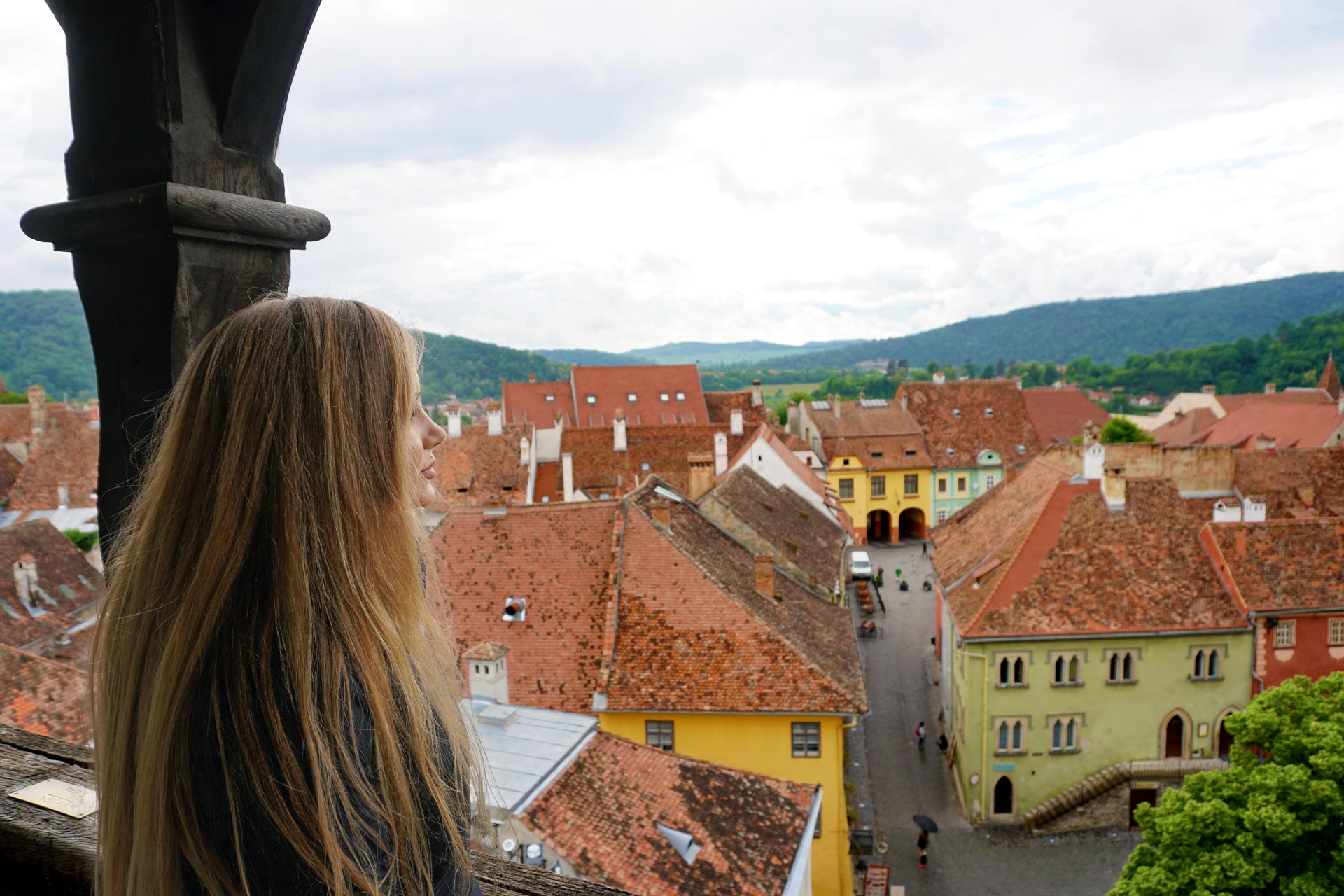
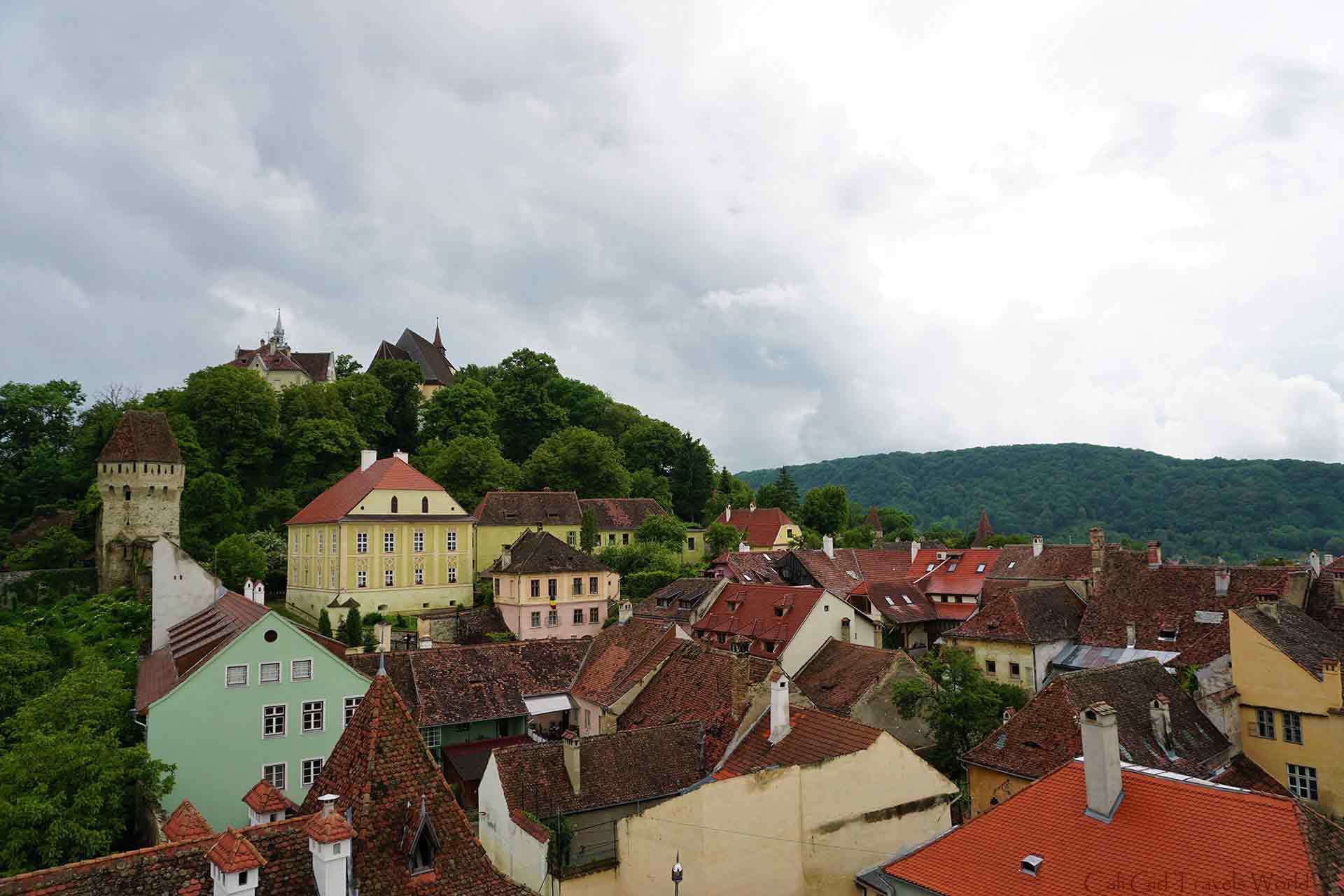

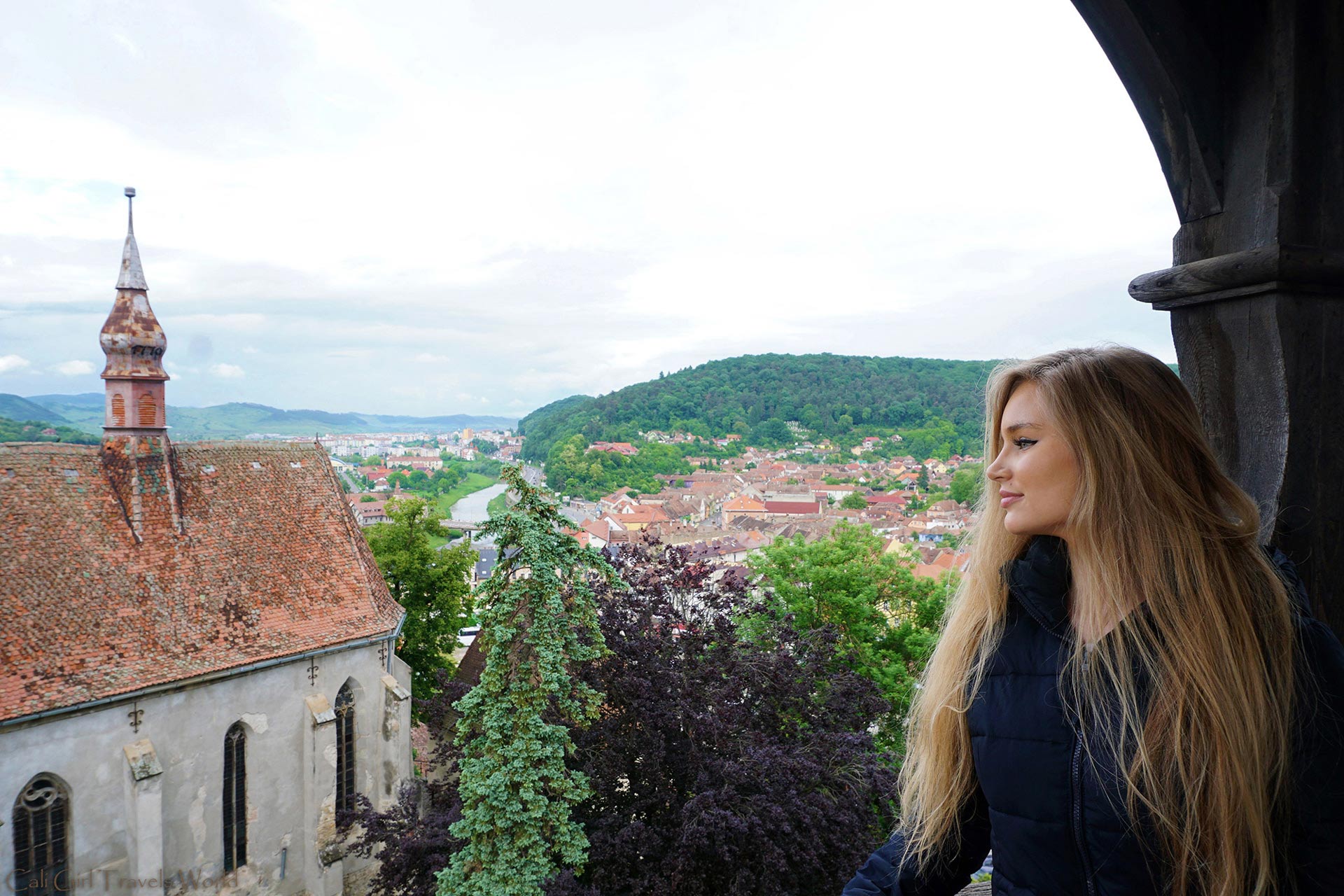
Sighisoara is a living piece of history. When it was built in the Middle Ages, Transylvania was part of the Kingdom of Hungary. The Hungarian King enticed Germans to immigrate and settle in this area with tax incentives. He wanted them there to act as a buffer to protect his kingdom from being pillaged by enemies to the east.
Sighisoara was one of the 7 citadels built by these German settlers, which became the power centers of Transylvania for centuries to come.


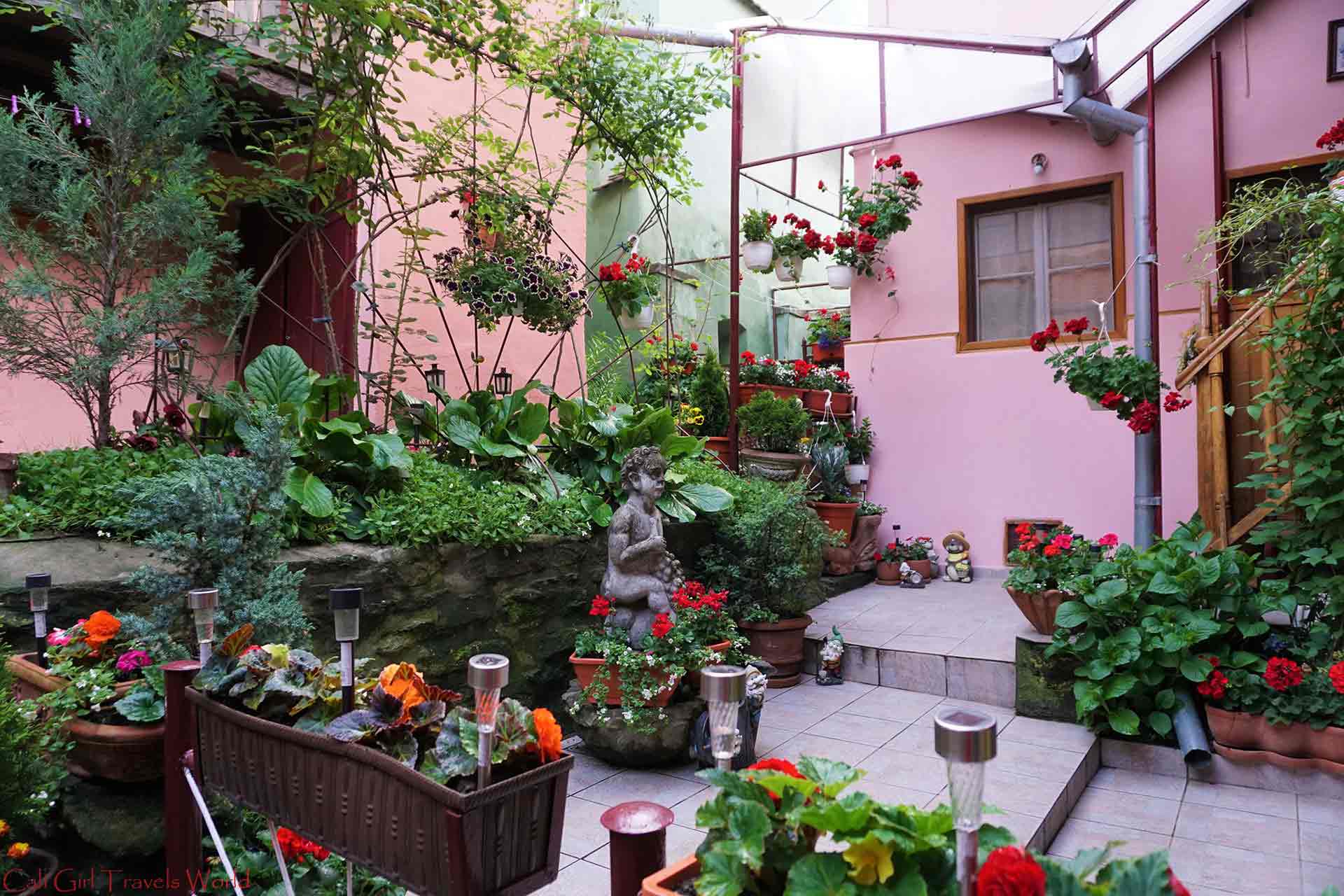
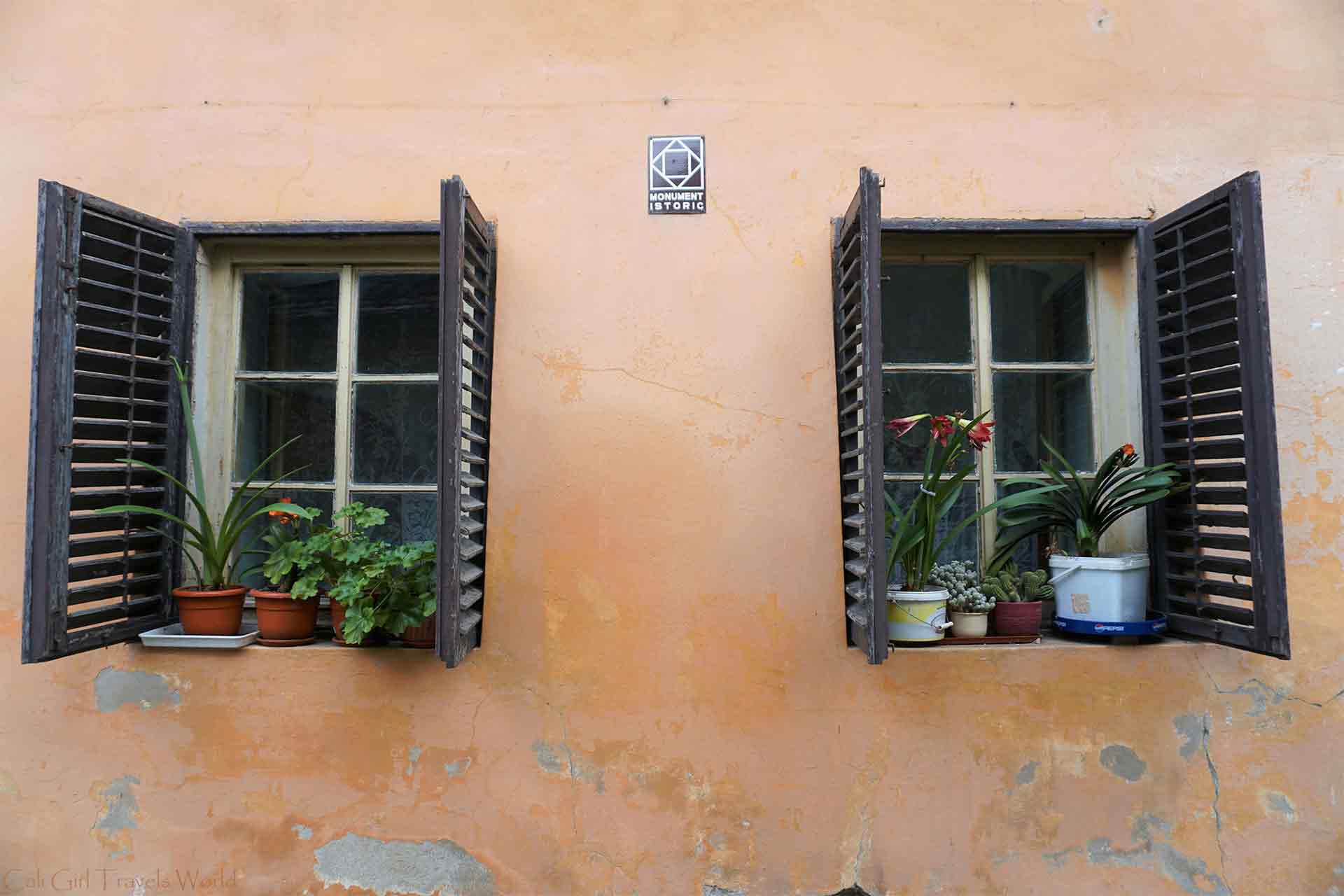
Many of the charming, pastel-colored houses that line these cobblestone lanes are over 300 years old. Some of the homes are still occupied by the same families that built them.
You’ll find souvenir shops, restaurants, accommodation, or art galleries on just about every street. There’s plenty of beautiful, traditional artwork created by the local artists, carrying on the traditions of the German craftsmen.
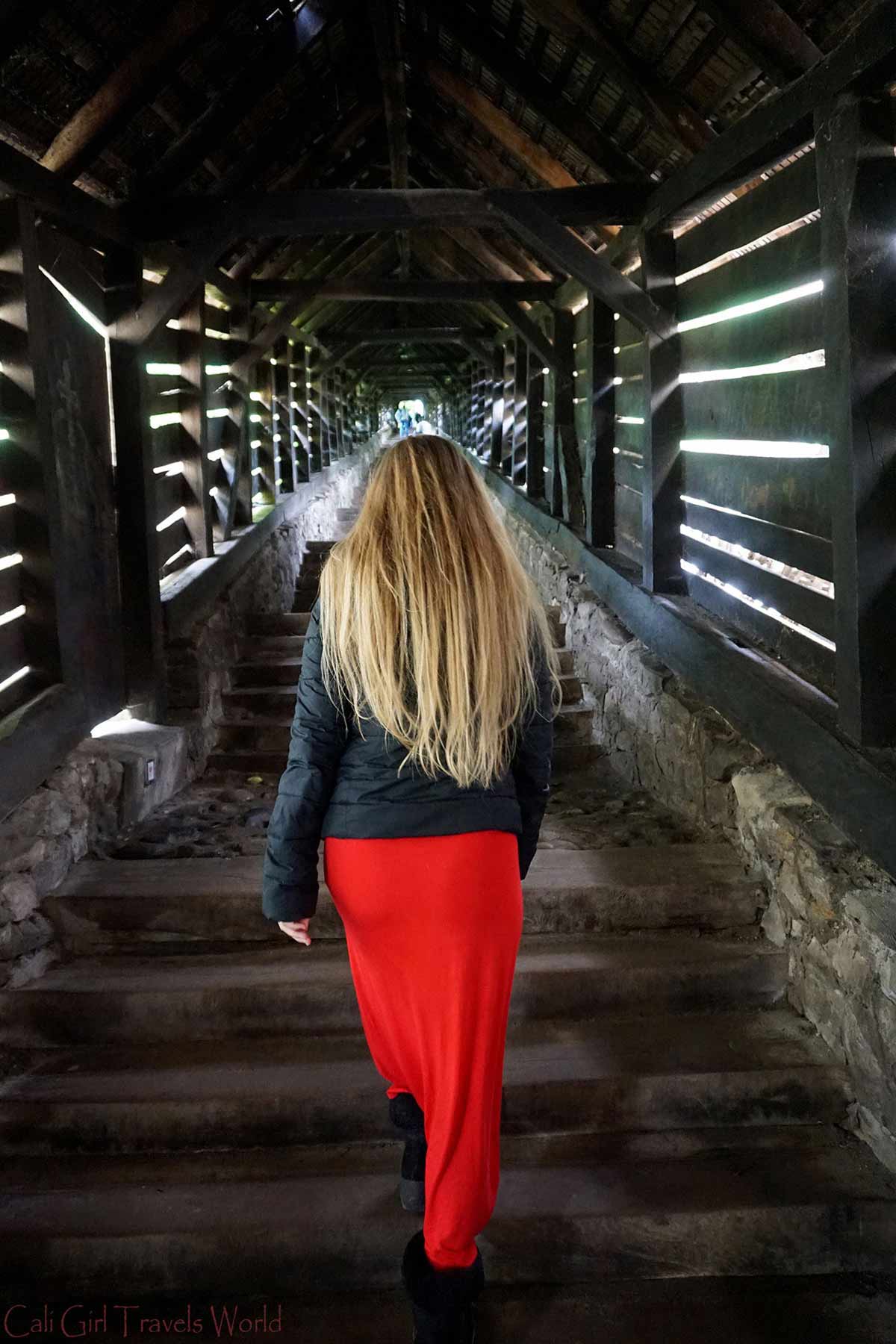
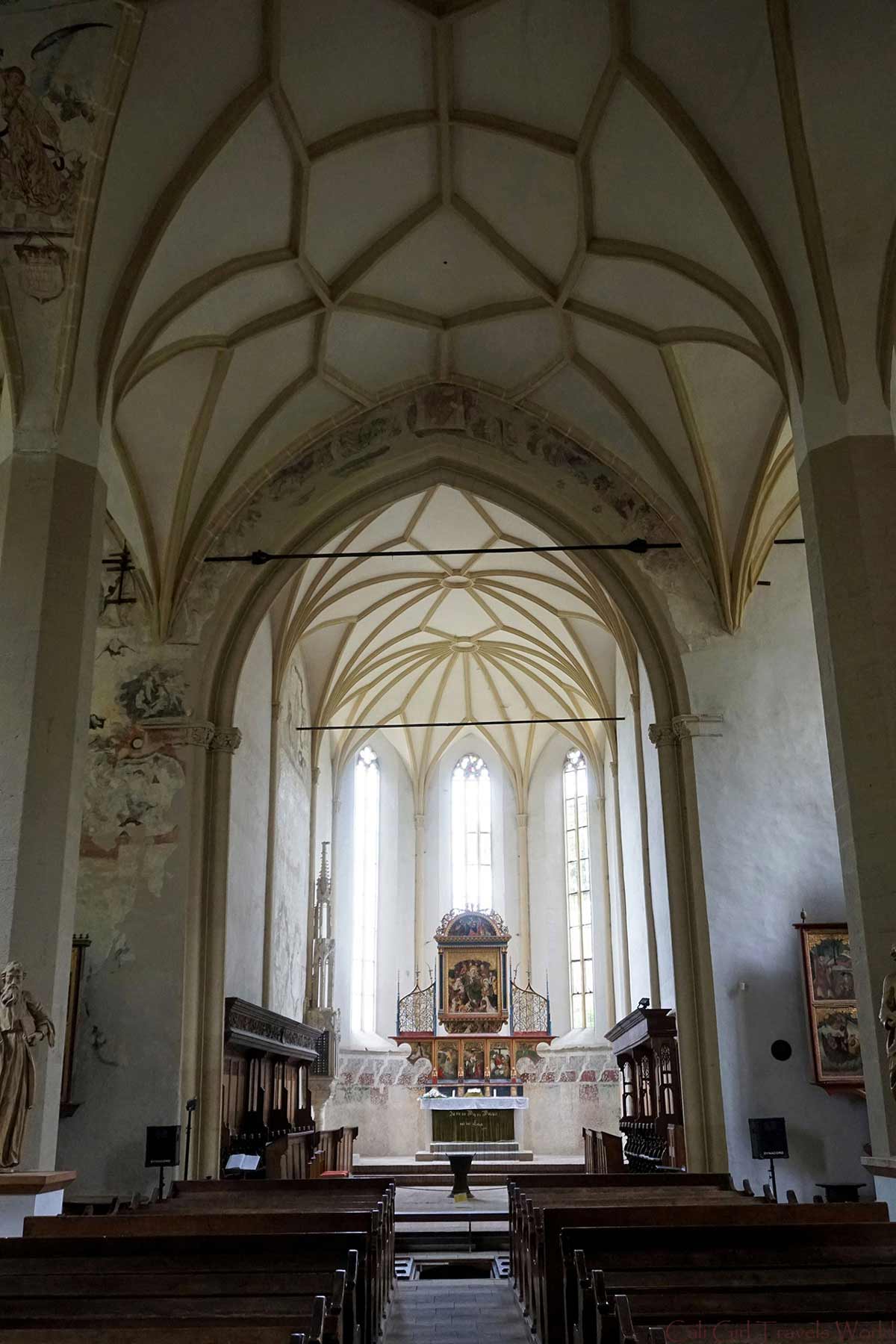

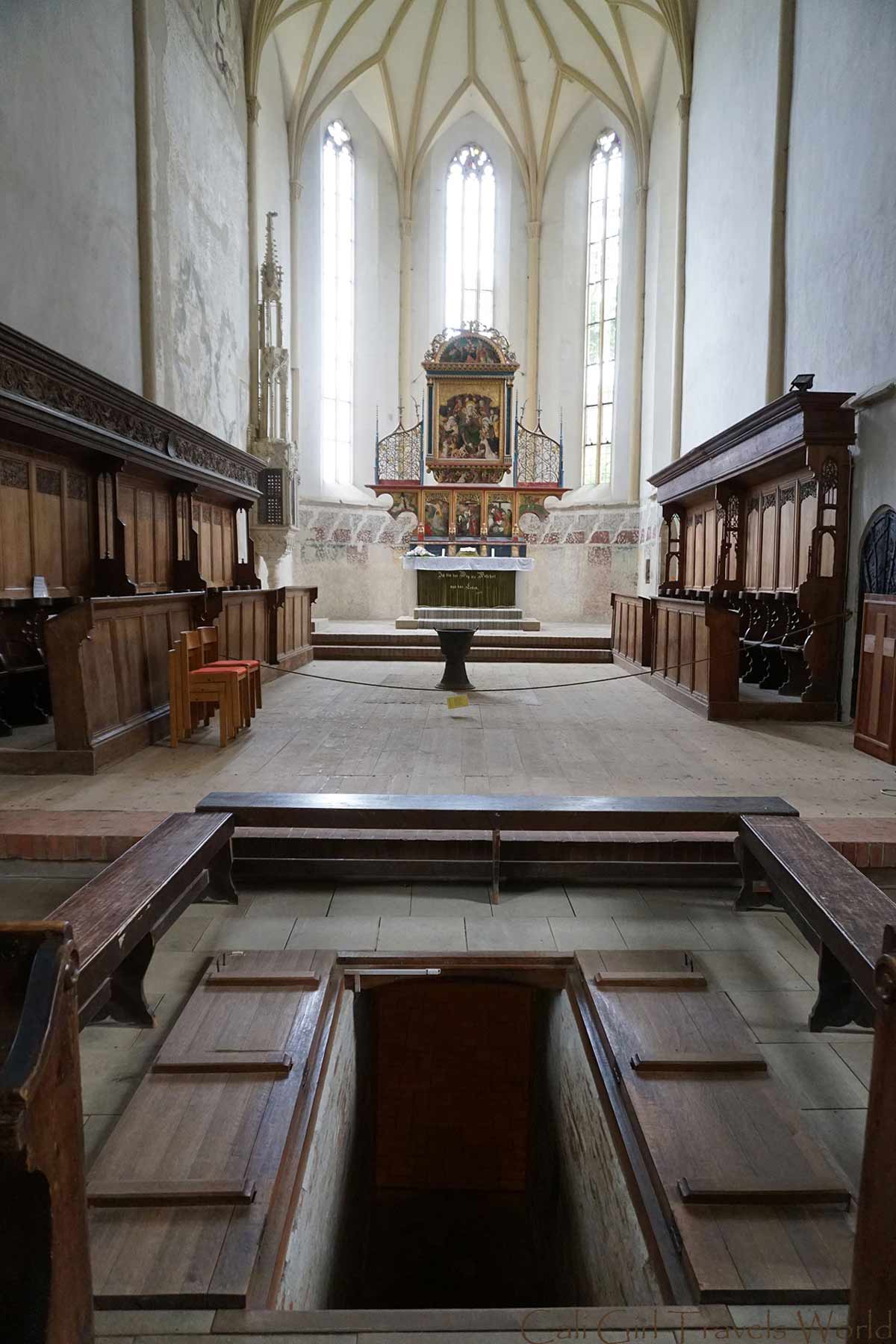
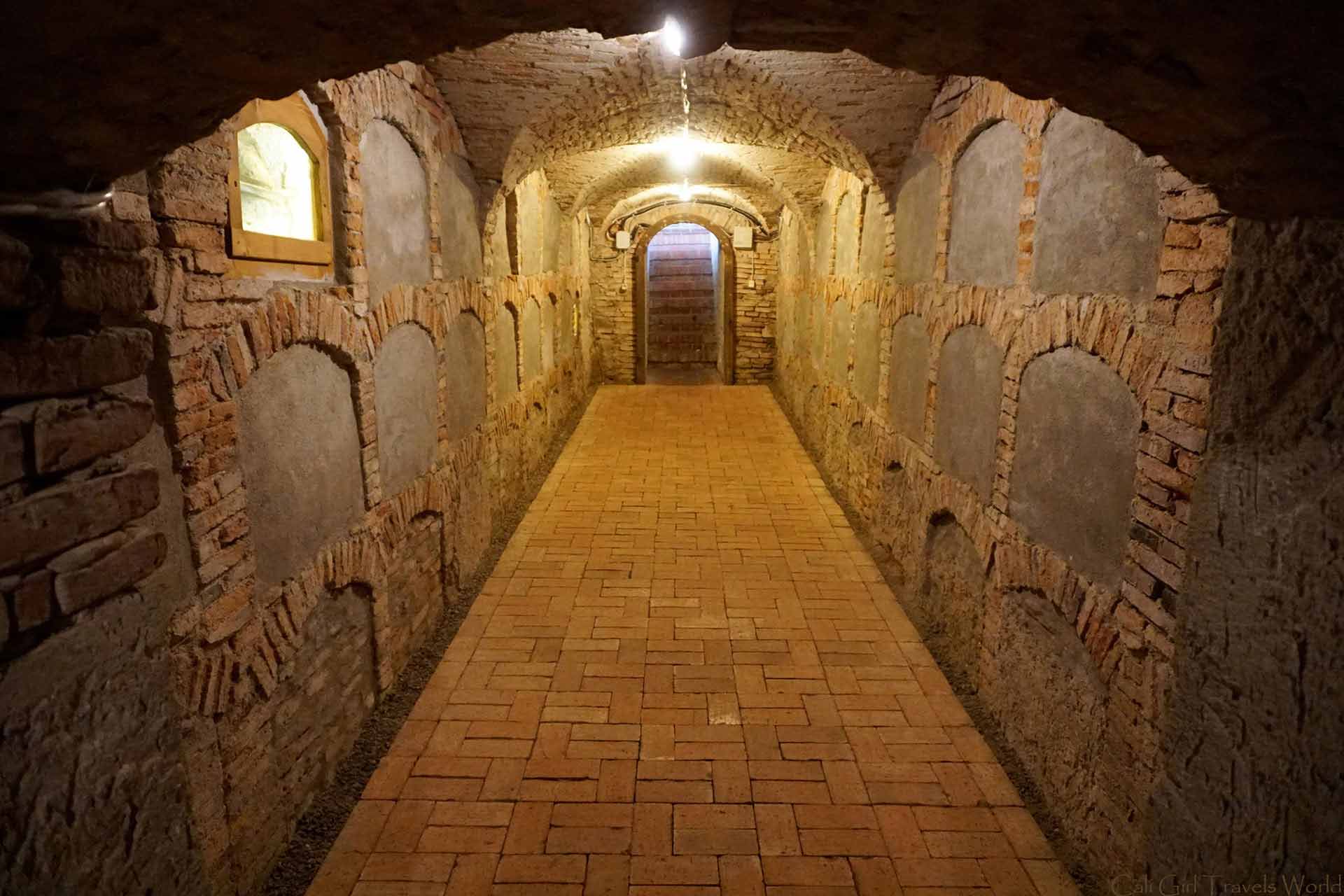
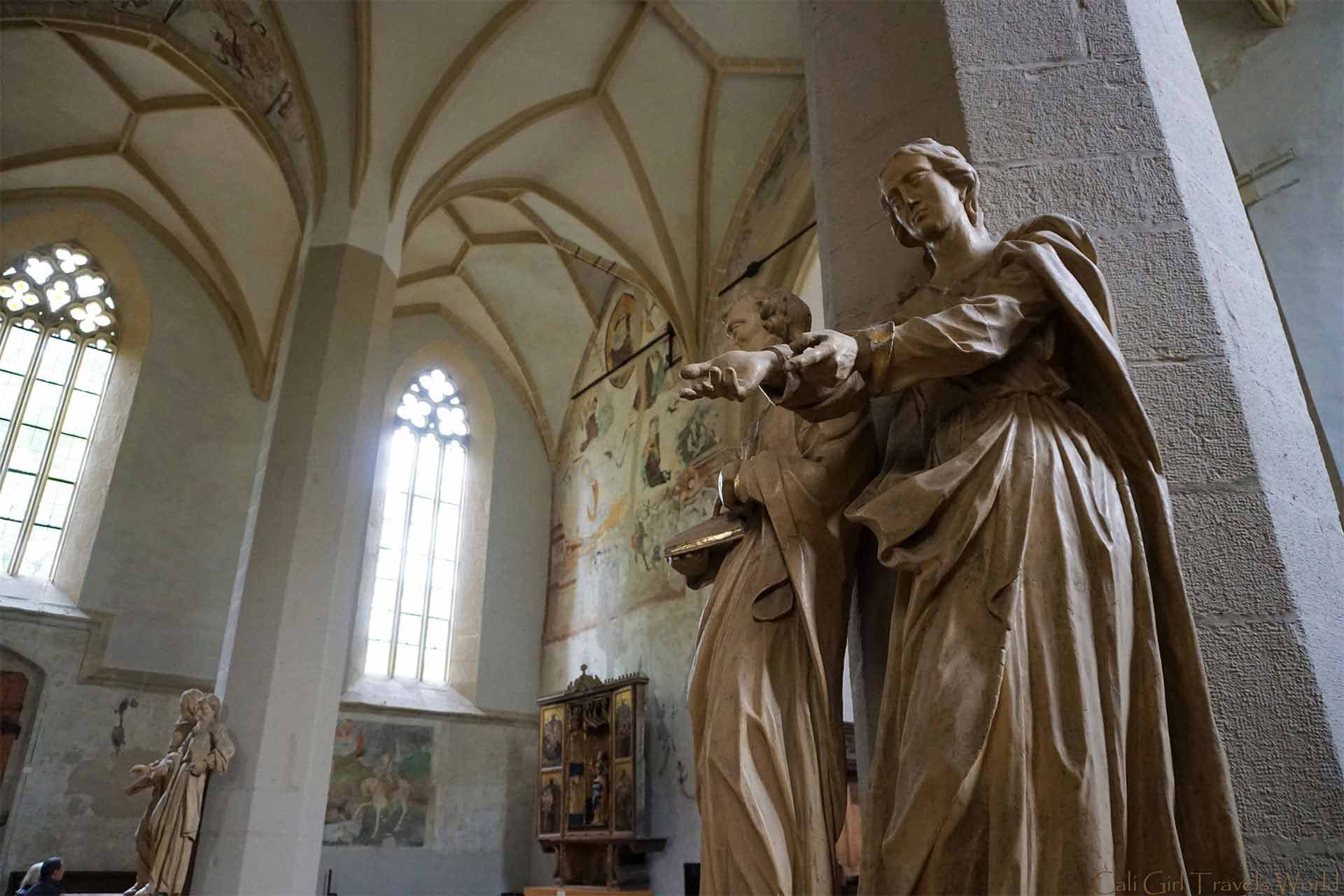
The soul of Sighisoara is the Church on the Hill, connected to the citadel by a long, tunnel staircase. This was the most important structure in the citadel and the last defensible refuge if the city was attacked. Every family in Sighisoara had a chest of supplies stored in the church in case they were trapped there by invaders.
Can you believe some of the murals in here are over 500 years old?
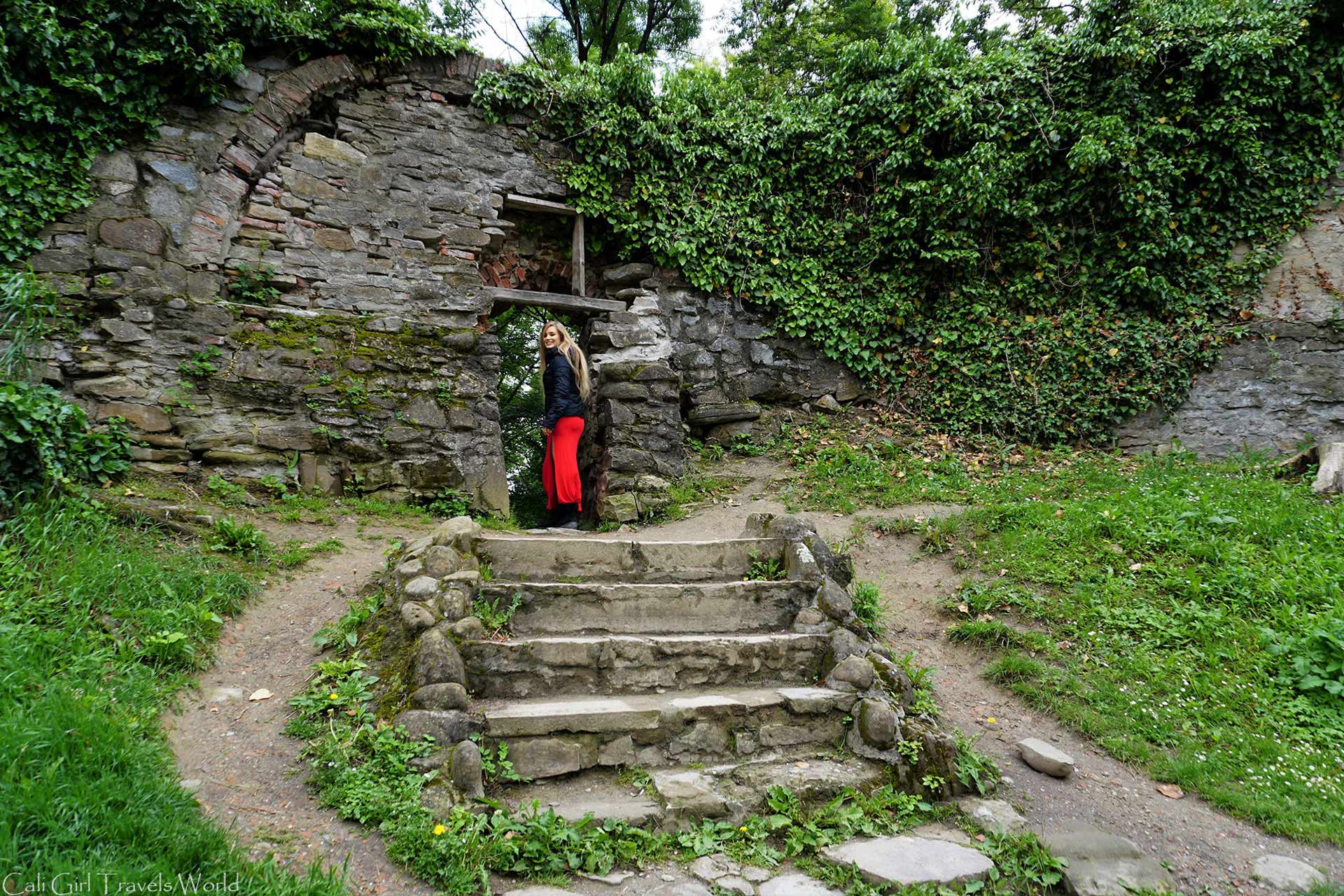
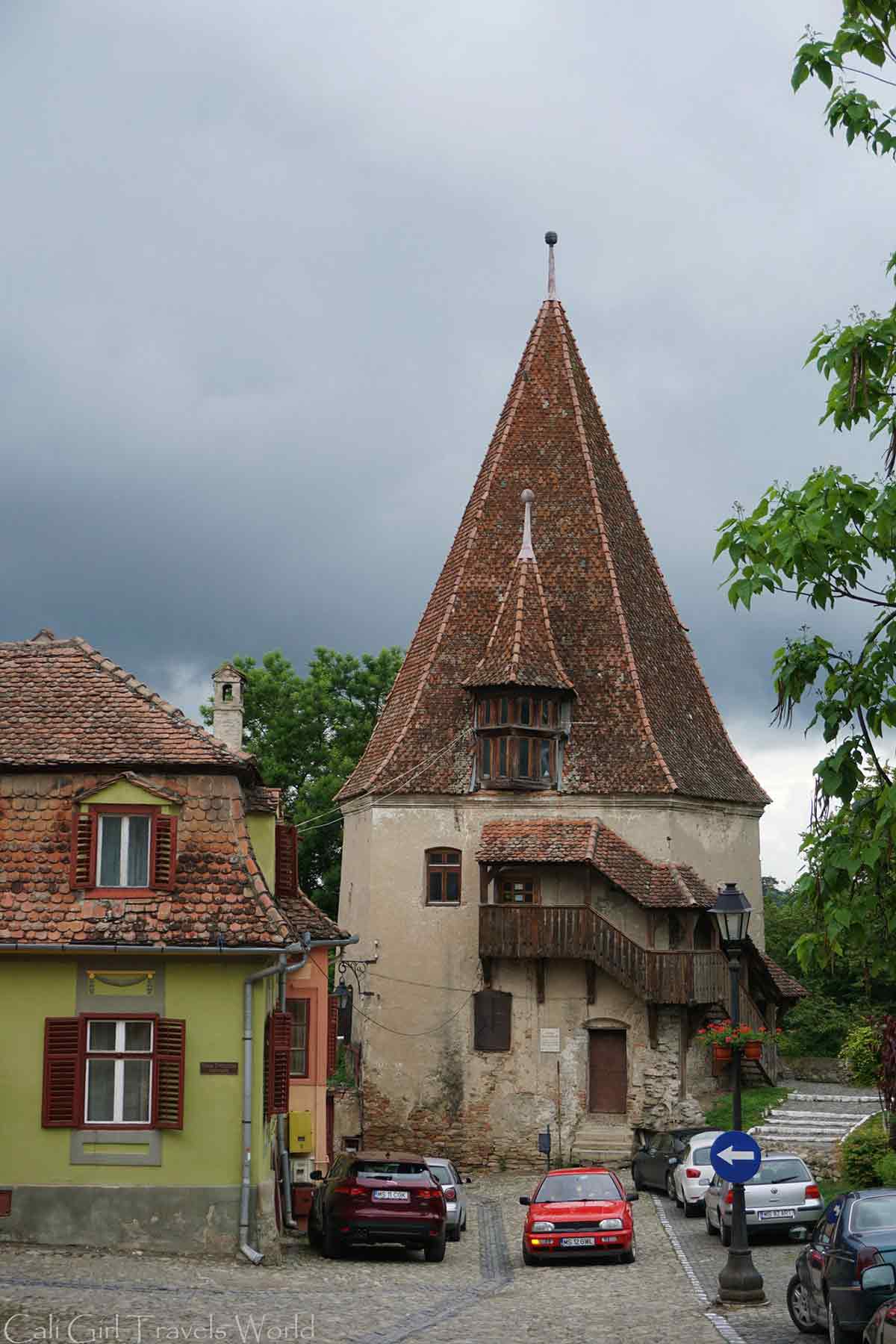

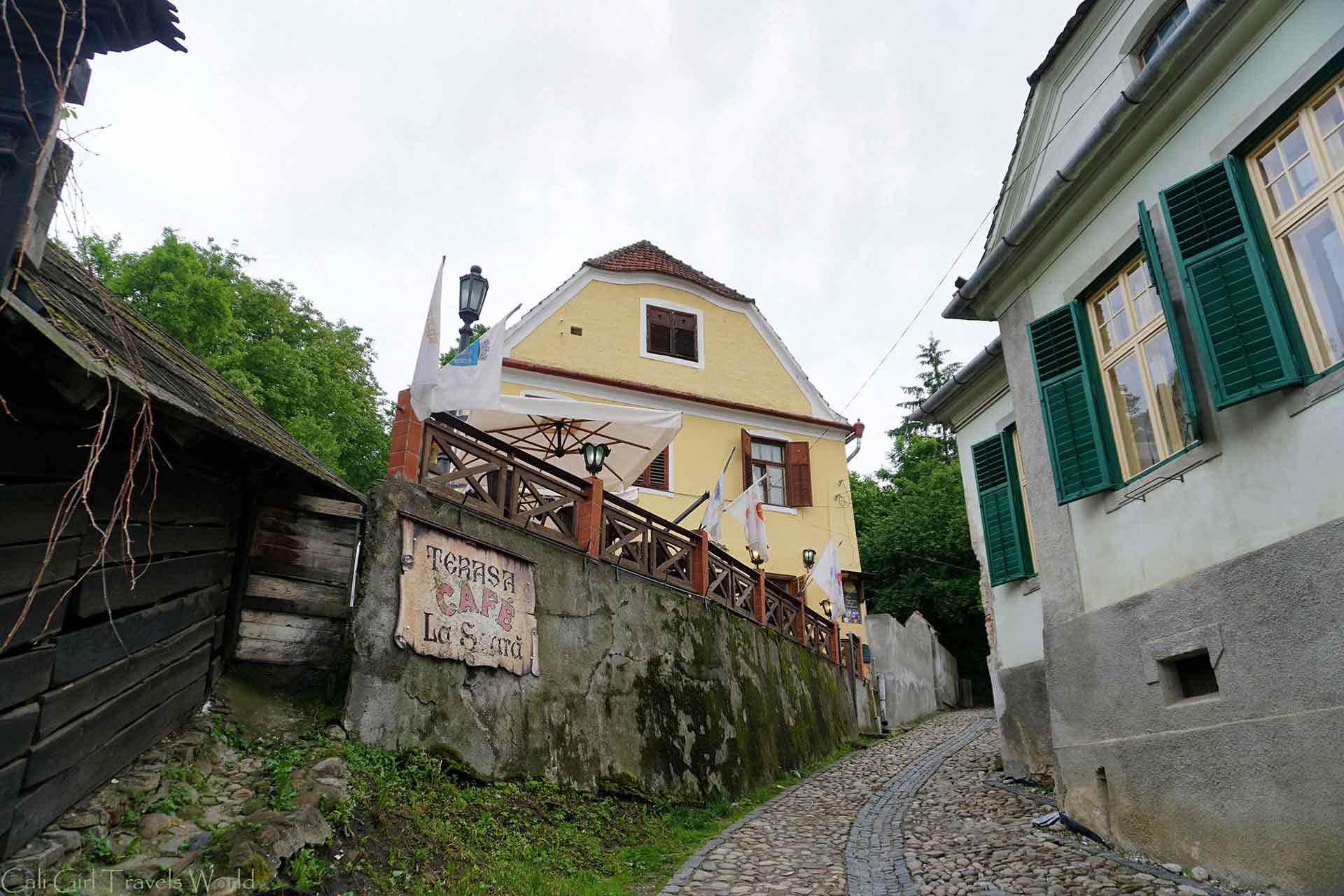

Sighisoara’s main claim to fame is the legend of the Vampire, Count Dracula.
The real Dracula was a merciless military commander, so feared for his cruelty, that a tale grew over the centuries that he was a vampire. Dracula’s father, Vlad Dracul (Dracul means “The Dragon,” and Dracula means “Son of the Dragon”), was a ruler of neighboring Wallachia. He was living in Sighisoara when Dracula was born. The actual house Dracula was born in is gone, but there’s a plaque to mark the spot.
Today, you can find kitschy vampire souvenirs at almost any shop in the city, but don’t let that distract you from the rich history that Sighisoara has to offer.
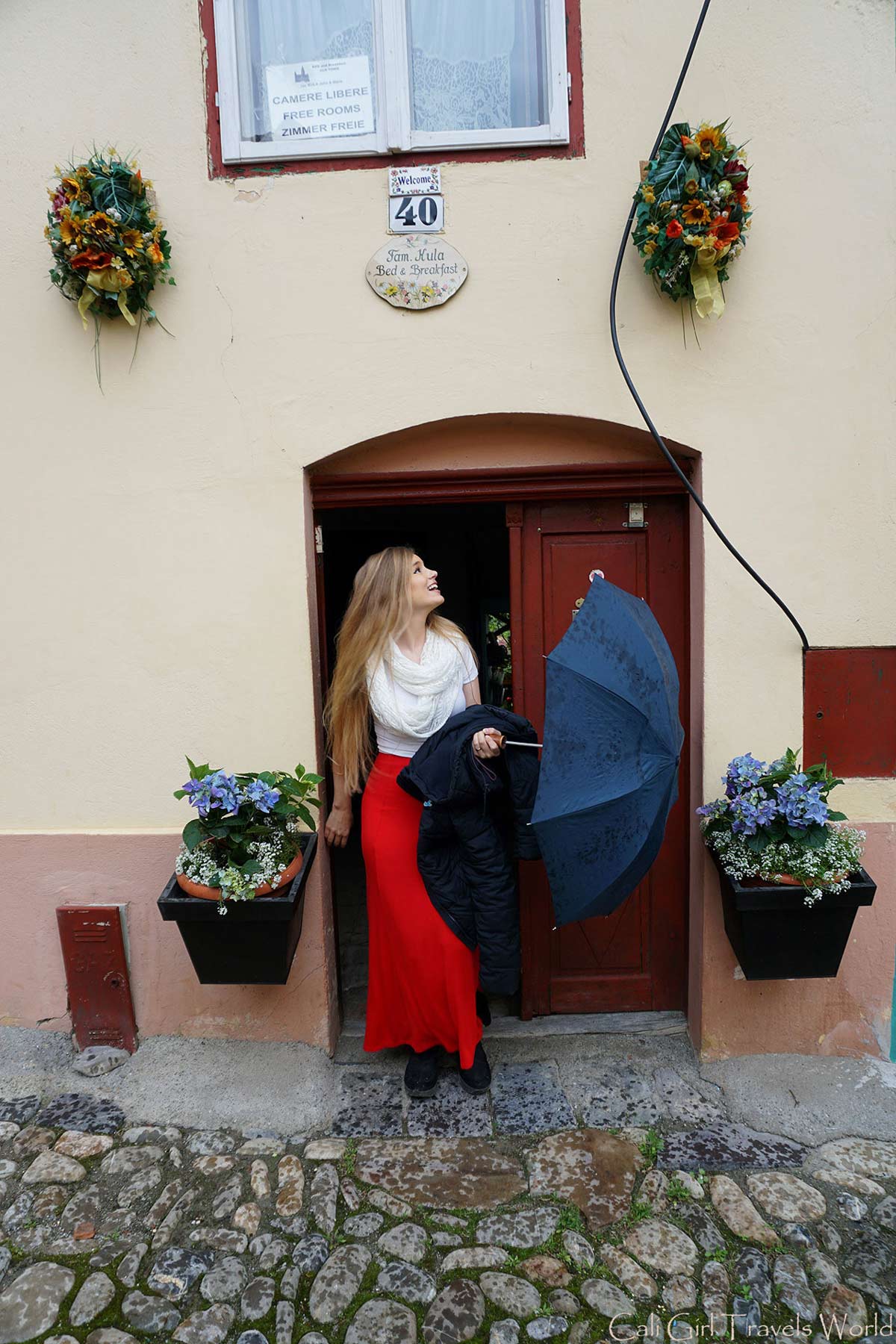
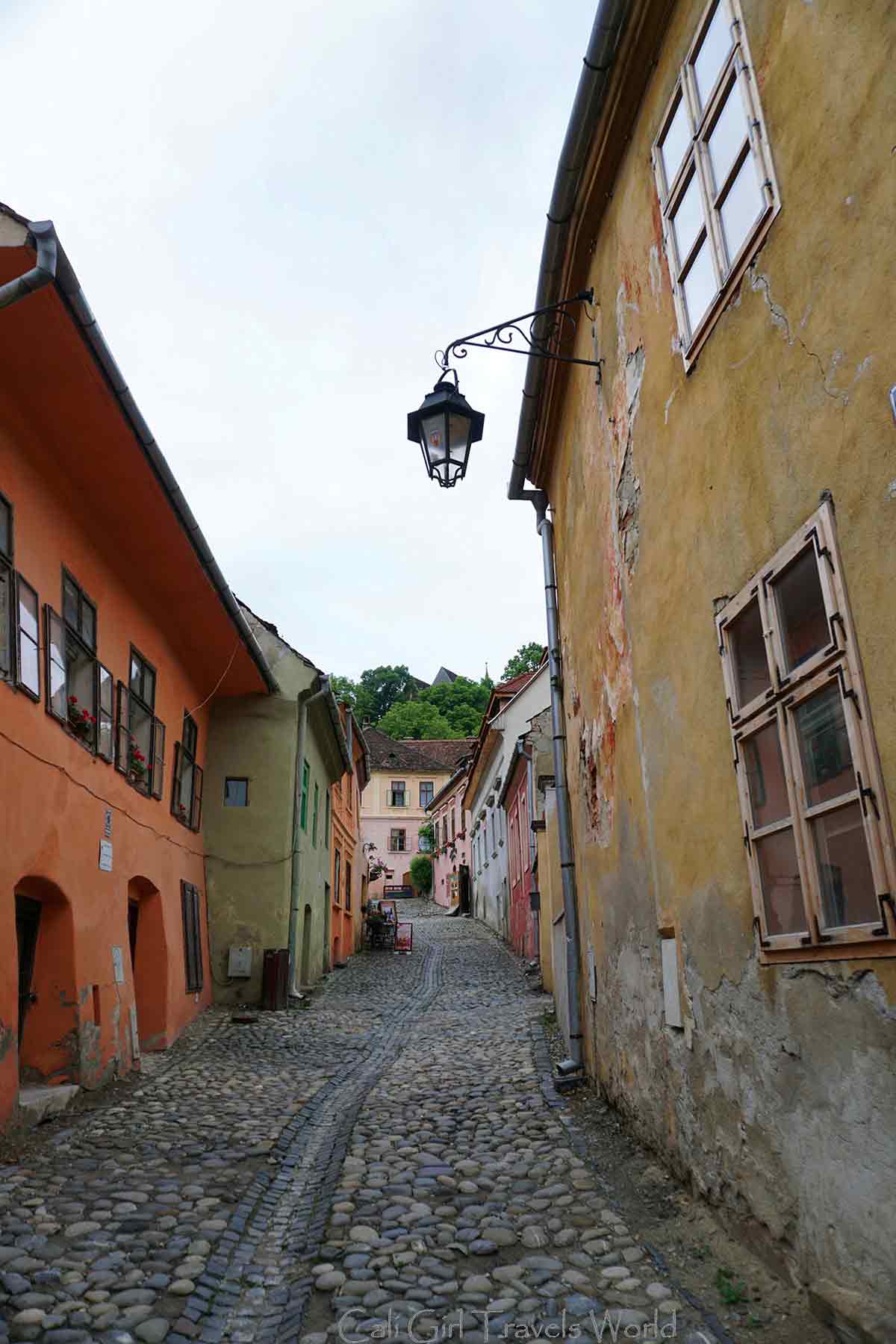

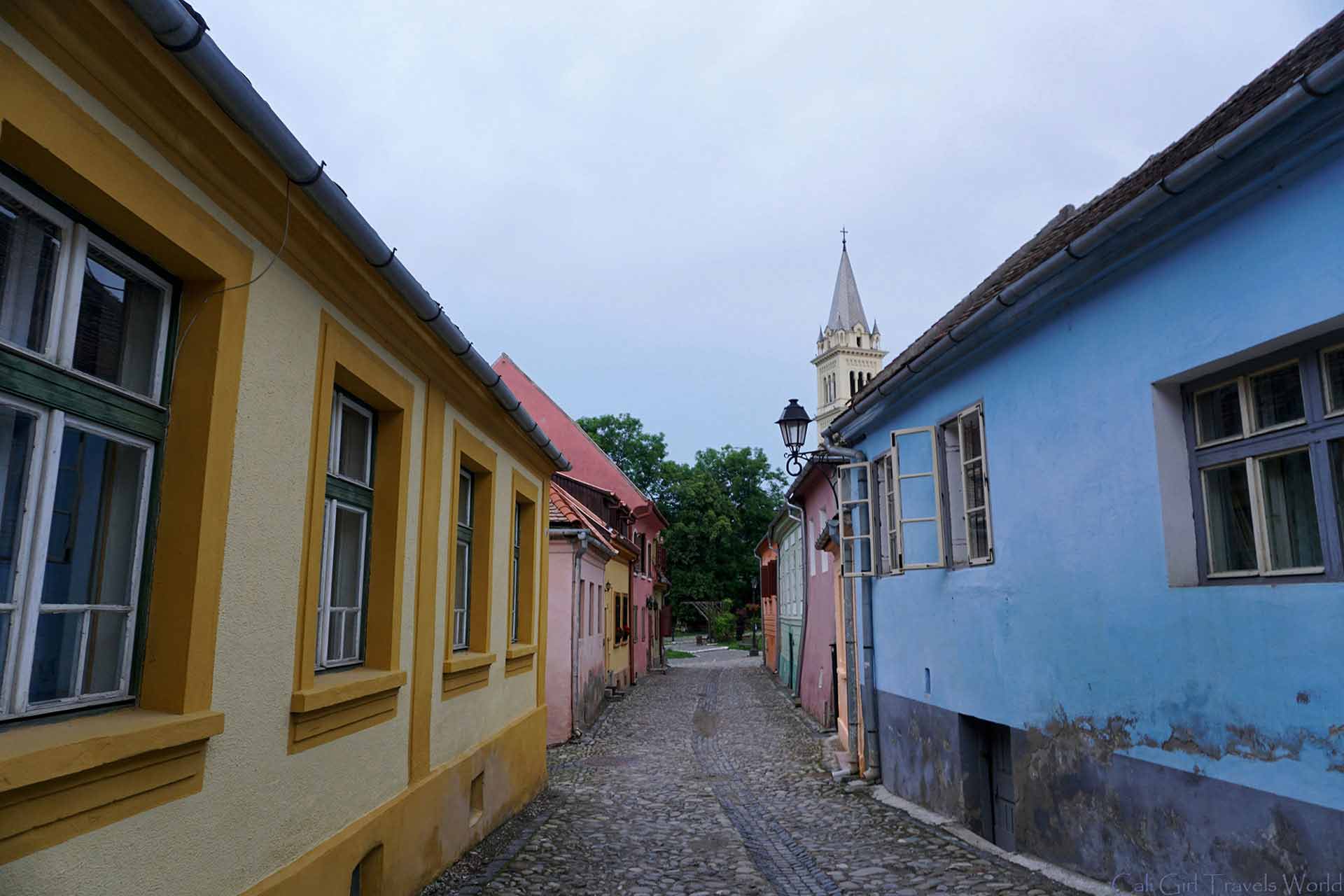
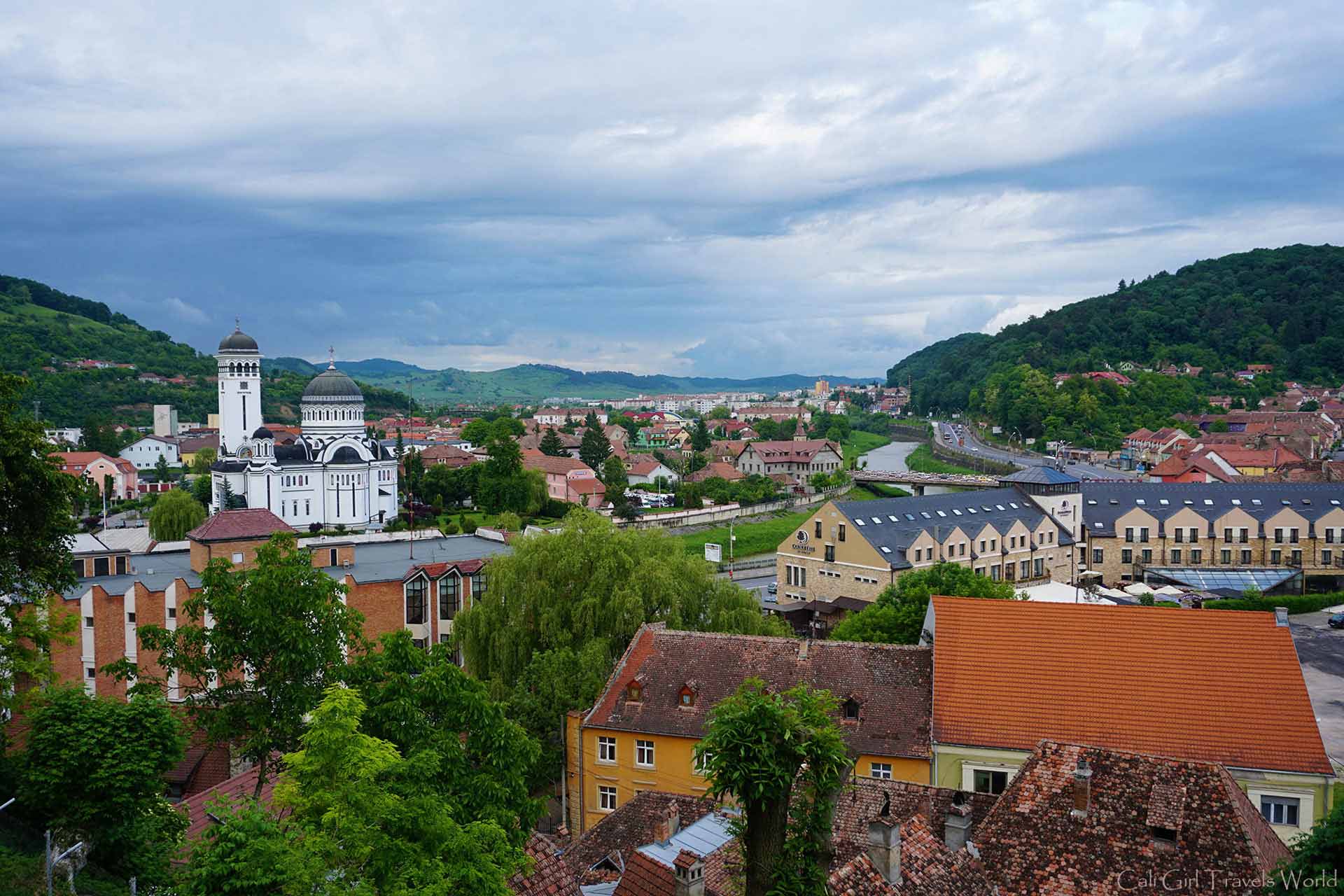
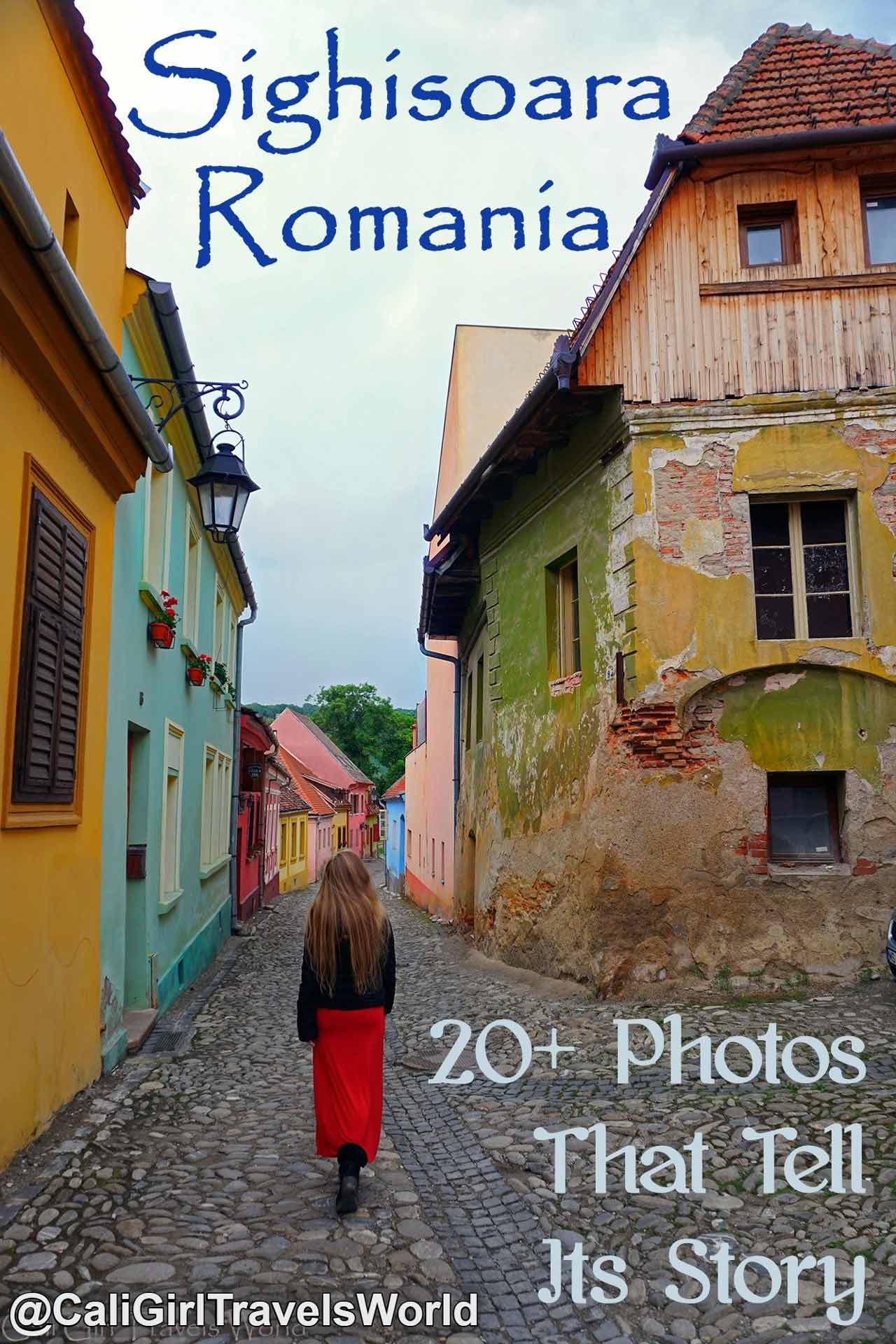
Pin me!
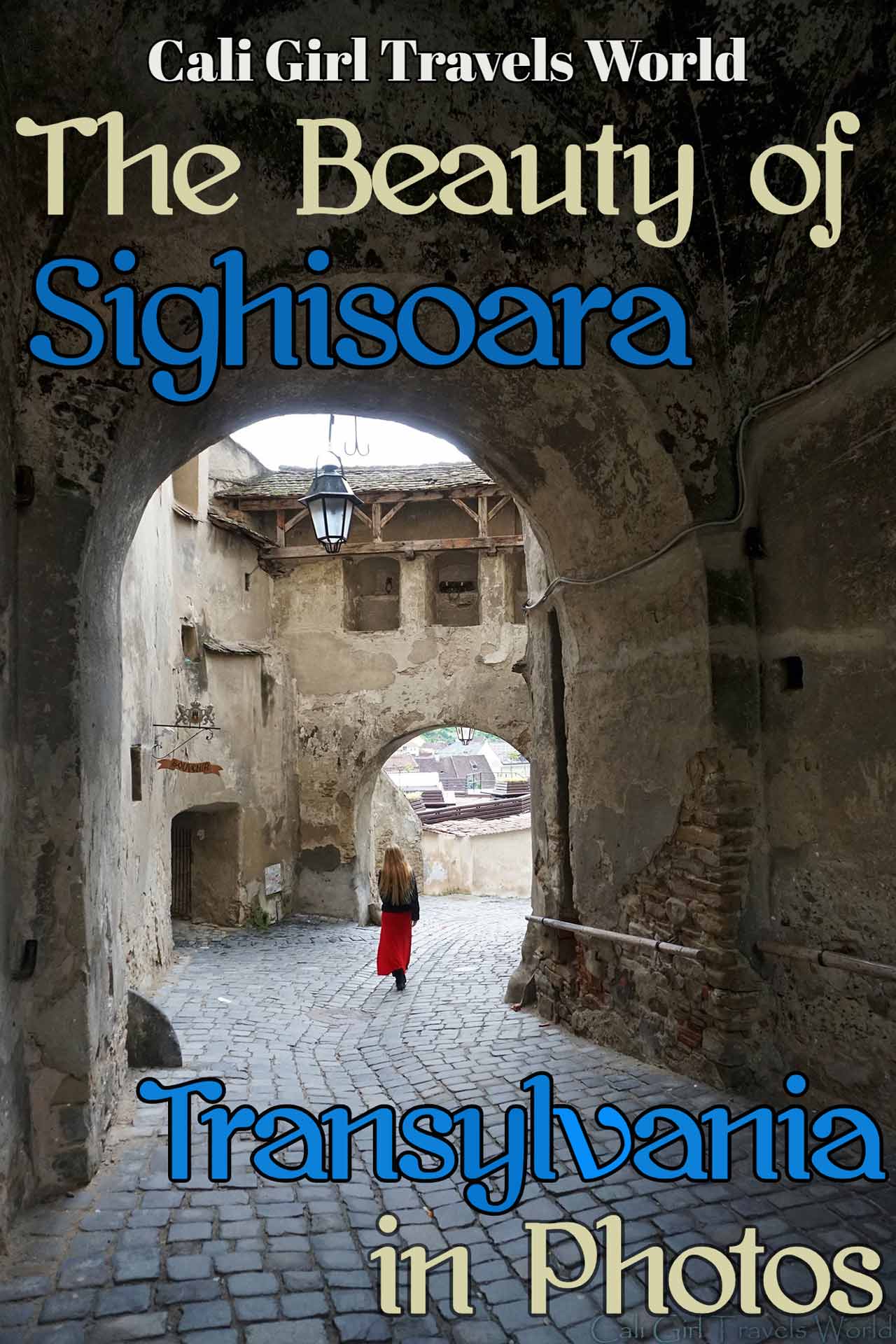
Pin me!

Hi, I’m Brit!
I'm from California, but I don't live anywhere. I've lived out of a suitcase for 5 years among exactly 50 countries, and I don't ever plan to stop. Come travel with me around the world at CaliGirlTravelsWorld.com.
Hi, I’m Brit!
I'm from California, but I don't live anywhere. I've lived out of a suitcase for 5 years among exactly 50 countries, and I don't ever plan to stop. Come travel with me around the world at CaliGirlTravelsWorld.com.

Wow, just wow!